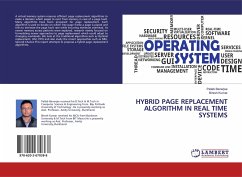Complex projects are usually decomposed into small units of work each to be done using restricted and specific resources, personnel, and specialties in a limited amount of time. A workflow is one such graph. Workflow modeling is used in almost every large-scale projects such as climate modelling, disaster modeling and recovery, business processes management, structural biology and chemistry, medical surgery, stock market modelling, financial risk analysis, DNA analysis, next generation sequencing, building construction, factory construction, etc. Realistic computational workflows are composed of hundreds and even thousands of tasks with long execution times. Running such workflows on conventional computers takes months and even years to complete and by then the results are most probably out of date. The Cloud is the most common infrastructure being used to run computational intensive workflows.
Bitte wählen Sie Ihr Anliegen aus.
Rechnungen
Retourenschein anfordern
Bestellstatus
Storno








